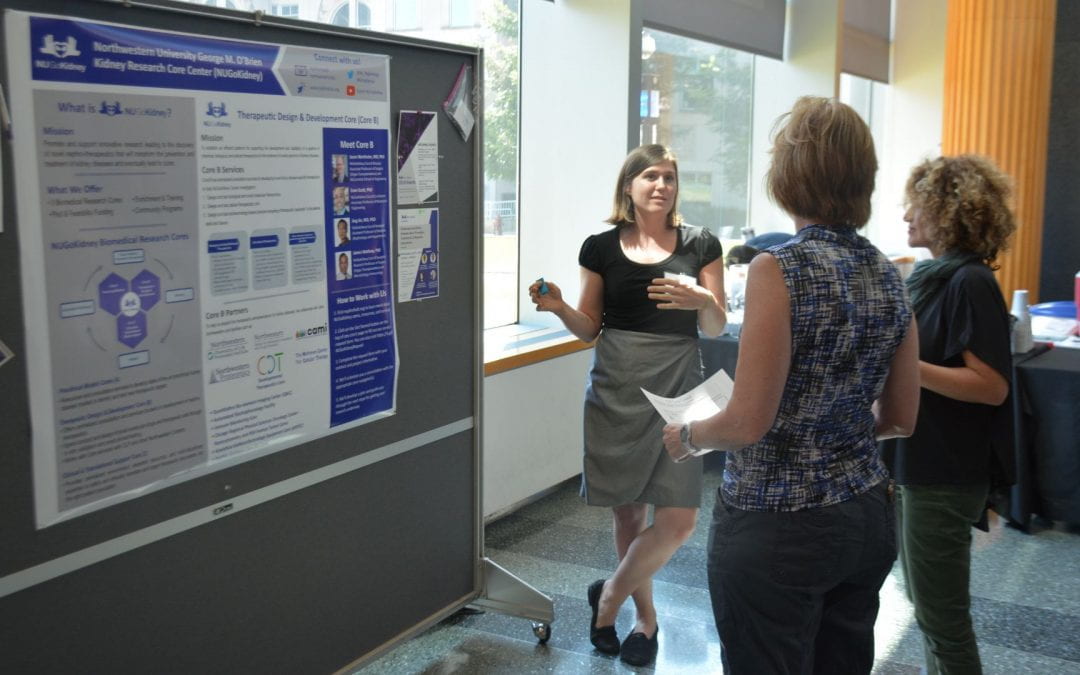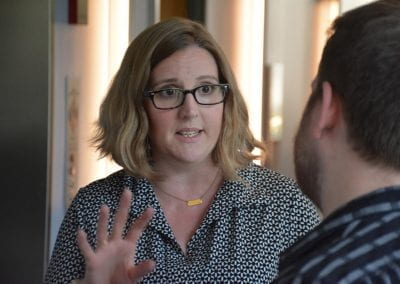Watching neurons die provides Richard Morimoto with clues on how he might better keep them alive. The molecular biologist specifically studies neurons exposed to cell stress as well as those expressing proteins linked to neurodegenerative diseases.
Now, a new instrument at Northwestern’s Biological Imaging Facility (BIF) is helping the Morimoto laboratory to develop — and, more importantly, monitor — small molecule therapeutics that restore neuronal cellular health and to slow, or even reverse, neuronal death.
“Our research requires many of the instruments at the Biological Imaging Facility, and the new BioTek LionheartFX allows us to generate high-resolution imaging of living neurons, a vital capacity in helping us monitor protein aggregation,” says Morimoto, the Bill and Gayle Cook Professor of Biology and director of Northwestern’s Rice Institute for Biomedical Research.
Research in Morimoto’ lab addresses a fundamental aspect of biology known as protein homeostasis, or proteostasis, the processes by which cells maintain protein vitality for good overall health. Failure in these quality control processes is the basis of hundreds of human diseases, including cystic fibrosis, cancer, metabolic diseases, and neurodegenerative diseases.
The LionheartFX was one of many new instruments highlighted during the annual Chemistry of Life Processes (CLP) Institute Core Crawl on July 11. More than 300 researchers and graduate students took part in the event, which showcased the institute’s growing portfolio of shared research facilities. CLP operates eight cores and four centers of excellence that play a critical role in accelerating research across the University. Approximately 75 administrative, technical, and research staff at the institute support more than 60-affiliated faculty working at the interface of the physical sciences, chemistry, medicine, and life sciences.
In the weeks before it was installed, Jessica Hornick, BIF operations director, says numerous labs contacted the facility to discuss the new instrumentation. Hornick hosted many of those labs during initial training sessions July 15-18.
“There was high demand for extended-period, incubated, live-cell imaging and we’ve worked with a number of principal investigators over the course of several years to identify the best instrument available,” says Hornick. The cost of the LionheartFX was subsidized by the Rice Foundation, CLP, the Office for Research, the Program in Biological Sciences, the Department of Chemistry, and the Department of Molecular Biosciences.
In another of CLP’s eight cores, research capabilities were expanded in November 2018 to include the ability to isolate and characterize very large protein complexes in a new way. The Proteomics Center of Excellence (PCE) manages the new instrument, a ThermoFisher Q-Exactive Ultra-High Mass Range (UHMR) mass spectrometer, which was funded by a 2018 National Institutes of Health shared instrumentation grant ((1S10OD025194-01).
“The UHMR expands what our current instrumentation can detect in terms of analyzing extremely large protein complexes,” says Paul Thomas, associate director of Northwestern Proteomics. “Protein complexes are the functional engines of the cell. They represent many different proteins coming together to produce a biological effect.”
Proteomics is the large-scale study of proteins. Until the 2000s, scientists relied on breaking a protein into small pieces, analyzing them using mass spectrometry and piecing the information back together to determine their structure and function. In contrast to this traditional “bottom-up” approach, Northwestern’s Neil Kelleher, molecular biosciences, chemistry, and medicine and director of Northwestern Proteomics, helped confirm the feasibility of a “top-down” strategy, which measures intact proteins using a sophisticated technology. Since then, Kelleher, a member of CLP, has been demonstrating the power of top-down proteomics to provide complete information about the sequence and composition and variations of human proteins in health and disease.
A second new instrument in PCE will be used to train scientists on the top-down approach. The ThermoFisher Q-Exactive HF BioPharma now anchors the ThermoFisher/Northwestern University Top-Down Training Center (Housed in Hogan 4-120). PCE will host its next top-down training course November 11-14.
“The training facility allows us to have a center away from the hustle and bustle of the rest of PCE at Silverman Hall,” says Thomas. “It creates a space where we can bring in new practitioners of top-down proteomics and give them the tools for ultimate success in this burgeoning field.”
CLP is part of Northwestern’s robust ecosystem of University Research Institutes and Centers, some 50 interdisciplinary knowledge hubs that harness talent from across all areas of the institution. CLP provides investigators across Northwestern, as well as users from industry and other research institutions, access to highly specialized instrumentation as well as PhD-level expertise.
Core Expo Set For October 15
CLP presents its annual Core Expo from 11 a.m. to 1 p.m. on October 15, 2019 at the Lurie Cancer Center’s Ryan Family Atrium (West), 303 East Superior St., Chicago. Managers from nearly a dozen core facilities will showcase their innovative biomedical expertise, research, and services available to Chicagoland researchers.
Attendees can learn how centers and cores collaborate to advance potential therapeutics and diagnostics from the early stages of discovery through pre-clinical testing.
Richard Morimoto, the Bill and Gayle Cook Professor of Biology and director of Northwestern’s Rice Institute for Biomedical Research



